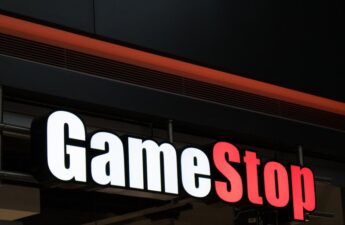In brief
Tech entrepreneur Kevin Rose’s Web3 startup Proof is the creator of the smash NFT project, Moonbirds.
The rapidly-expanding startup recently said that it would open up commercialization rights to Moonbirds and Oddities to everyone.
The April launch of Ethereum project Moonbirds set the NFT space ablaze, generating $280 million worth of primary and secondary sales within two days as collectors vied for the latest buzzy profile picture sensation. But the story behind that electric debut started months earlier with the debut of the Proof Collective.
Proof was the brainchild of Kevin Rose, the tech entrepreneur and venture capitalist, who co-founded the startup with artist Justin Mezzell. Rose, who famously co-created early social news platform Digg in 2004, was an early outspoken fan of NFTs and Web3 tech, which he regularly discussed on his Modern Finance and Proof podcasts.
As momentum around NFTs escalated in late 2021, Rose was looking for a way to build a cohesive community around artists, collectors, and fans of his podcasts. “I really wanted to have a conversation with a lot of the people that I was starting to bump into,” he told Decrypt.
Many NFT projects launch with 10,000 unique collectibles, but Rose thought that would be too many slots for a private, members-only group. “It just becomes chaos,” he said of a five-figure group size. Instead, he settled on 1,000 passes for the Proof Collective, with each membership represented by an Ethereum NFT that could be verified for access and resold if desired.
Launched in December 2021, the Proof Collective NFTs were offered via a Dutch auction format starting at 5 ETH (about $20,000 at the time) and gradually dropping in price. Nearly two-thirds of the NFT passes sold for just 1 ETH ($4,000) apiece, and the entire primary sale generated about $7.4 million worth of ETH.
Initial details were thin around exactly what the three-year Proof membership entailed, aside from entry to a private Discord server, early access to podcast episodes, and future NFT drops. It was, in essence, a bet on Rose, his devotion to the NFT space, and the community of artists and builders that the well-connected founder could potentially tap into.
Here are some of our favorite moments from the Collective Lounge and the Proof of Moonbirds parties in NYC. Thank you to everyone who made it out for a fantastic evening! We wouldn’t be here without our amazing community. See you at NFT NYC 2023! pic.twitter.com/0Nyl3sXAcN
— Moonbirds (

Soon after, Proof began rolling out NFT collaborations for holders, beginning with Emotes by Heart You. In February, Collective members got a taste of how Proof could utilize Rose’s network and reach to create something new and exclusive in the form of Grails, a drop that let each pass holder mint a single NFT from a gallery—but without knowing the respective artists upfront.
Once the mint was complete, Proof revealed that the creators included CryptoPunks maker Larva Labs, tech entrepreneurs Alexis Ohanian and Gary Vaynerchuk, Linkin Park member Mike Shinoda, and notable crypto artists like Tyler Hobbs (Art Blocks’ Fidenza), Hackatao, and CrypToadz creator Gremplin.
After the reveal, some of the better-known artists’ Grails NFTs resold for huge sums. One of the NFTs, a photo from generative artist Dmitri Cherniak, sold for 80 ETH ($213,000 at the time) on the secondary market. It had cost the Proof Collective member just 0.05 ETH ($147) to mint.
To the Moon
Grails was limited to Proof Collective pass holders, but Moonbirds aimed for a much larger audience. The Ethereum NFT collection spans 10,000 profile pictures (PFPs), each of a pixelated owl with various visual traits, and two of the NFTs were dropped free to each Collective member. Most of the rest were offered up for sale to non-members.
“We thought of launching a PFP as kind of table stakes for being in this world,” Rose told Decrypt. The Proof Collective NFT has a simple credit card-like membership pass image that’s identical across the entire run, so Proof decided to create its own take on the familiar CryptoPunks and Bored Ape Yacht Club-like collection with randomized characteristics.
Like Proof, Moonbirds was initially going to use a Dutch auction format. But as buzz built around the project, suggesting that eager collectors would likely ignite a gas war that could drive up Ethereum network transaction fees, Proof instead set the price at 2.5 ETH (about $7,600) and held a raffle for access to the allowlist.
It sold out rapidly at launch on April 16 and ignited a ravenous secondary market, pushing the floor price—that is, the cheapest available NFT listed on a marketplace—to a peak of 38.65 ETH a week later. That was more than $113,000 at the time. One Moonbird sold for 350 ETH, or over $1 million, amid frenzied trading before May’s crypto market crash helped tank prices.
“It just blew me away. I had no clue it was going to be that big,” said Rose of the launch. “If you’d asked me when we first started developing [Moonbirds], what would it be trading for? I would have guessed a couple of ETH. I wouldn’t have ever imagined that it did what it did.”
The buzz around Moonbirds only fueled the mystique around the Proof Collective itself, with the floor price for the membership pass surging to a peak of nearly 140 ETH in late April, or about $417,000 at the time. Like many NFT projects, the Proof Collective pass has fallen sharply since May’s crash, and now trades at a floor of 50 ETH, or about $71,300 today.
That’s still a sizable premium over the mint price. Proof has proven that there’s demand for an exclusive, NFT-gated community for deeply invested collectors. Asked what continues to fuel interest, Rose pointed to both its products—current and those on the horizon—as well as its ethos, which is focused on long-term collecting and supporting artists, rather than quick flips for profit.
“When we talk about collecting NFTs, we’re talking about holding them for decades to come,” Rose told Decrypt. “It’s a slightly different take on the average collecting group that’s out there.”
“There’s a lot of activity around the ‘degen’ behavior of collecting, which—you know, that’s fine,” he continued. “Some people will gravitate towards that style of collecting and flipping, but that’s just not who we are. We want to celebrate the artists and make it about the artwork and the artist, first and foremost.”
Raising and growing
Proof used Moonbirds’ initial success as a launchpad to accelerate its plans and rapidly begin building the startup into a robust Web3 business. And soon after the Moonbirds launch, Rose announced that Seven Seven Six—the VC firm of the aforementioned Alexis Ohanian, co-founder of Reddit—had invested $10 million into Proof.
Rose and Ohanian have history as longtime Web2 social platform founders who were painted as rivals in the mid-aughts. Rose described them to Decrypt as “hardcore competitors for many years.” Like Rose, Ohanian is another outspoken Web3 advocate, and they recently connected around NFTs and how they could work together on this next phase of the web.
According to Rose, their conversations centered on how Web3 could empower social communities, rectifying “a lot of the mistakes that we made back in the day, and things that we would do differently if we had to reboot it and do it all over again.”
On the Moonbirds launch day alone, Proof netted $58 million in revenue between the primary sale and royalties from the initial batch of secondary sales, Rose said in a YouTube video. “We didn’t need to raise capital,” Rose affirmed to Decrypt, “and that’s always the best time to raise—is coming from a position of strength.”
Beyond bringing in a high-profile ally, Rose pointed to Ohanian’s mandate for a diverse team at Seven Seven Six, which the Reddit co-founder created in the wake of George Floyd’s 2020 murder at the hands of Minneapolis police. Rose said that when he first met with the Seven Seven Six team, there were more Black people on the call than white people.
“I had never seen that before on a VC call,” Rose recalled. “It was just beautiful, his commitment to diversity at his own organization. It’s a big inspiration for who we want to be, especially when it comes to NFTs. How can we make that more of a reality around the worlds that we’re building?”
Since then, Proof has expanded its team considerably, jumping from four employees at the Moonbirds launch to about 30 today. It’s setting up a studio in Los Angeles, where Rose is relocating from Portland, with various plans ahead—including exclusive content and analysis for holders, as well as an in-person conference in 2023.
Proof is also building out a “social universe” platform that will first launch to members and Moonbirds holders before expanding more broadly. It’s not a 3D avatar-driven metaverse experience like Decentraland or The Sandbox, Rose insisted: “Metaverse is a pretty loaded term,” he said.
More on Proof’s future plans will be revealed tomorrow at a streaming presentation.
Opening up
Proof’s trajectory underwent a major shift on August 4 when Rose announced that it would open up commercial rights to Moonbirds and its recent Oddities NFT collection to everyone—not just NFT owners. That means that anyone, anywhere can take Moonbirds and Oddities imagery and turn it into derivative art and products, or harness it for branding and other media.
It effectively puts those projects into the public domain via a licensing model called Creative Commons Zero (CC0), or “no rights reserved.” It’s an open-source approach to brand building that notable Ethereum project Nouns has most visibly pushed forward in the NFT space. Other CC0 project examples include CrypToadz, GoblinTown, and MFers.
CC0 proponents believe that by opening up use of a project’s artwork to everyone, it increases the meme-like spread of the brand across the internet and into the real world. That could help accrue value back to the original NFTs over the long haul, with the provenance of the artwork and current ownership of NFTs still tracked by the Ethereum blockchain.
“From the outset, we promised to fully embrace the values of Web3,” Rose told Decrypt. “CC0 is a chance to rethink IP by introducing a new type of decentralized brand. It empowers our community to collectively champion the usage of their NFTs. We believe this is using the blockchain as intended, as a single source of truth that points to the original owner.”
The downside, however, is that Moonbirds and Oddities NFT holders no longer individually control the use of their respectively owned images. On August 19, crypto investment firm Galaxy Digital released a research report alleging that Proof “misled” buyers on Moonbirds IP rights. Proof representatives did not respond to a request from Decrypt for comment on the report.
The response from Moonbirds holders was mixed. Some championed the CC0 plan as a forward-thinking, Web3-native mentality. Others bemoaned the apparent loss of individual rights and similarly claimed that they had been deceived. One pseudonymous collector, Lakoz, said that they missed out on a “six-figure brand deal” as a result of the change, but later announced that they had licensed their Moonbird image to a Web3 bourbon barrel project.
“We knew that this change was going to be controversial,” Rose told Decrypt. “But fundamentally, we think pushing the limits and not becoming complacent will ultimately be the correct call; we’re far too early in Web3 to stop experimenting.”
Indeed, the backlash coincided with a significant fall in the floor price for Moonbirds. It sat at about 18.35 ETH (about $29,700 at the time) early on August 4, per data from NFT Floor Price, and ticked down in the days that followed until it fell to a recent low of 11.7 ETH (about $22,250) on August 16. However, it has rebounded somewhat in ETH terms to a current price of 14.85 ETH (about $21,200).
“Ultimately, CC0 is a big bet, and we understand that,” Rose added of the controversial move. “If CC0 becomes the norm for PFP projects, it will forever change the world of intellectual property. Moonbirds and Oddities will play a pretty big part in this movement.”
Since the CC0 announcement and controversy, Proof has worked to shift the focus back on exclusive benefits and future plans. It launched the Grails II drop, which included pieces from artists like Justin Aversano, Erick “Snowfro” Calderon, and Pussy Riot’s Nadya Tolokonnikova, and Rose and team are gearing up to showcase new projects at tomorrow’s FutureProof streaming event.
Exclusive perks are key to the Proof Collective’s allure and value proposition, but Rose told Decrypt that he believes it can ultimately benefit the wider NFT ecosystem—and not extract value or attention from other projects as it scales.
“No one else has to lose for us to win in this world,” said Rose. “I really believe that we can try and help elevate a lot of up-and-coming artists, and that would be such a great thing for the entire ecosystem.”
Stay on top of crypto news, get daily updates in your inbox.
Source: https://decrypt.co/108104/kevin-roses-proof-from-nft-drop-to-growing-web3-biz-with-a-cc0-twist



